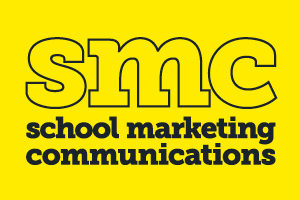There are two kinds of writing you need to keep the wheels of your education inbound marketing strategy spinning: content writing and copywriting. It’s important to understand what they are and how to leverage them for your marketing success.
Inbound marketing is a broad strategy that requires a blend of skills, techniques, and tactics to work well for your school.
The goal of inbound marketing is to attract inquiries from prospective students and parents (email, calls, in-person visits) to your admissions office. This is a different approach than going out to find prospectives, which is outbound marketing.
Inbound marketing gives your school’s recruitment team a much stronger chance with prospective students than outbound marketing. Your prospectives are coming to you — they’ve self-identified as leads.
There are many tactics of inbound marketing that education marketers use to attract prospective students. Event marketing, social media marketing, video marketing, email marketing, SEO, and PPC, are just few of the many we could mention.
But today, we’ll kick off two posts that get to the heart of all of these tactics: content writing and copywriting.
Writing: The Heart of It All
It’s no secret. We’re huge fans of rich content like photography, infographics, and video content. But these are not the heart of inbound marketing.
Words are at the center of inbound marketing. They provide the cohesive thread through all the rich media content you publish for your audience.
When you place video content and images in your marketing messages, they should reflect the ideas you convey in the words on your website, blog, newsletters, and print materials.
So let’s begin our series here with content writing.
Content Writing
In one of the most prophetic blog posts ever written, Bill Gates coined the term “Content is king.” And to this day, he’s right!
Content writing provides Internet users with information or entertainment.
Because people are looking for the information that has answers to their questions on the Internet, content writing is one of the most powerful tools you can use to attract visitors to your site.
We like to call it “edutainment.”
“Content is where I expect much of the real money will be made on the Internet, just as it was in broadcasting. But the broad opportunities for most companies involve supplying information or entertainment. No company is too small to participate.” – Bill Gates
Content writing is where you write the answers that your audiences are looking for from your education brand.
But that doesn’t mean it has to be boring!
Content writing isn’t as formal as academic writing. Here are some the special characteristics your content writing should have.
Content Writing Characteristics
Informal: Essays and dissertations are formal and have a professional tone. But content writing is marked by its casual, informal style. Content writing stays away from big words, staying at about a sixth-grade reading level.
That doesn’t mean that the content itself has to be simplistic! If you’ve ever read a book by the bestselling author Malcolm Gladwell, then you know the style and tone I mean.
Content writing for school marketers should be simple but not simplistic. Think of writing in Malcolm Gladwell’s style.
Malcolm’s books talk about complex, profound insights and cite large amounts of data. But his writing is easy to read and hard to put down.
Conversational: Academic writing loves to write in the third-person. Content writing is personal, using the first and second persons freely.
Airy: Good content writing allows the page to breathe. That is, there’s plenty of white space in between the text which helps the reader to scan the content more quickly.
Sentences are short. Paragraphs are 1 – 3 lines thick. And, again, words are kept to a sixth-grade level.
All these tactics keep the content light and airy, enticing the reader deeper into the text.
Discoverable: Content writing uses different techniques such as backlinking and SEO to help it stand out to your prospective students in the ocean of content on the web.
Episodic: Content writing doesn’t cover the entire subject all at once. It’s not comprehensive. It’s episodic.
(Man, I wish I had a sixth-grade level synonym for episodic!)
By writing out your thoughts in smaller “episodes,” you can publish new content more frequently and better keep your audience’s short attention.
Plus, writing out your content in a series of posts instead of one mega post will keep your audience coming back to your site for more.
Content is King
Bill Gates was right about a lot of things — and he certainly was right about this: content is king.
Inbound marketing for education relies heavily on content writing to build educational brands by attracting and cultivating prospective students or donors.
You might assume writing would come easily to education marketers. But the rules of successful content writing are different than academic writing, so you need to keep the characteristics above in mind when writing your marketing content.
Most of the time, schools need more help setting up their content marketing than they do running it.
That’s why when we create a new website or a new content creation workflow for our clients, we set it up with user-friendly, easy to maintain technology and train school staff how to write and publish their content online.







